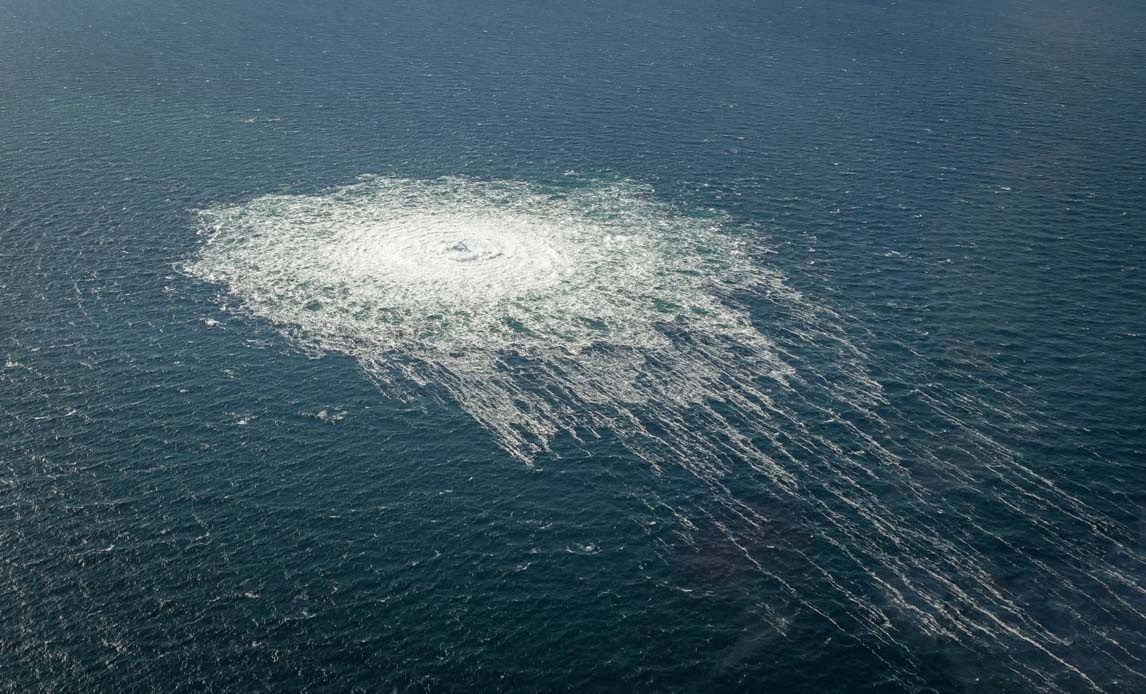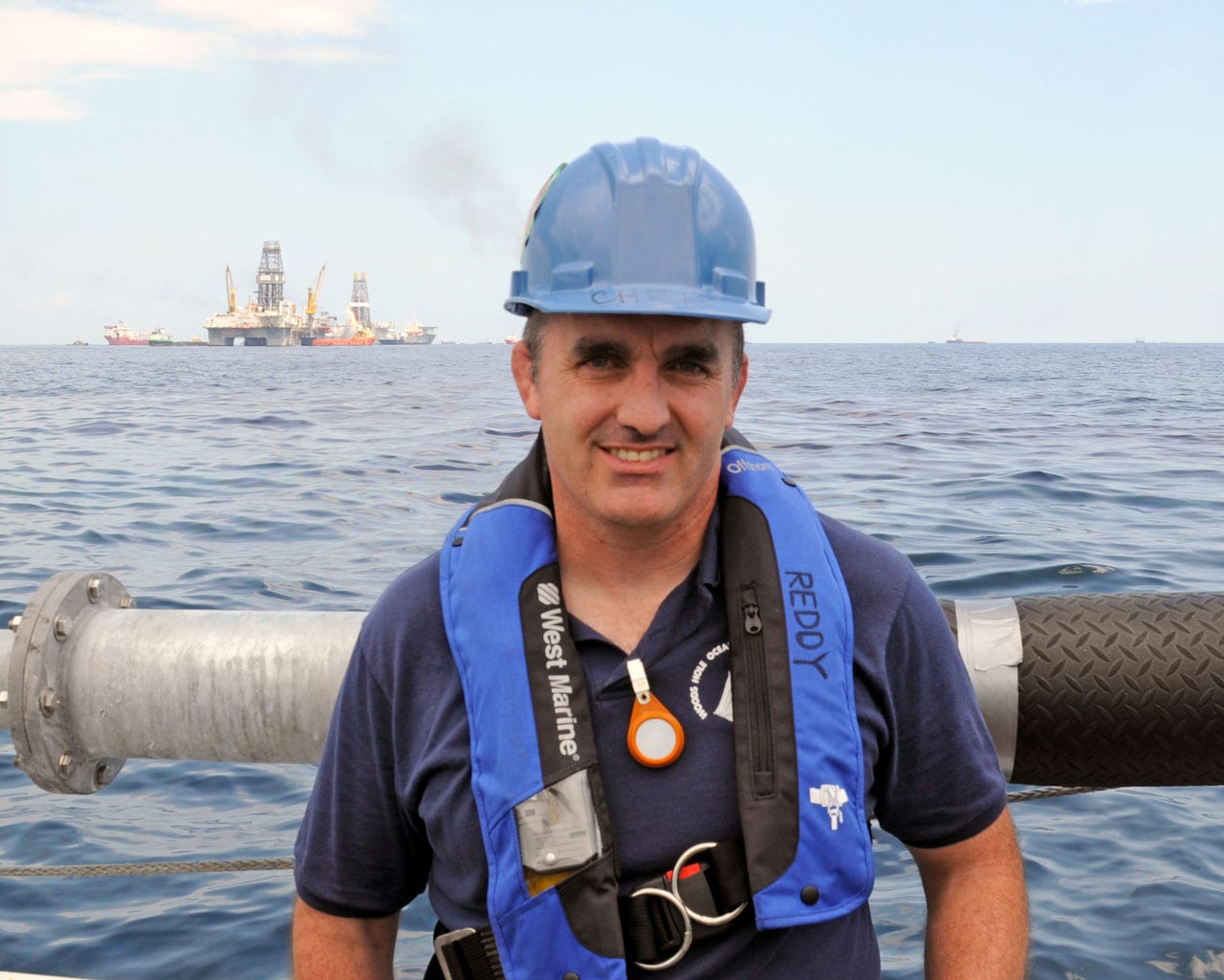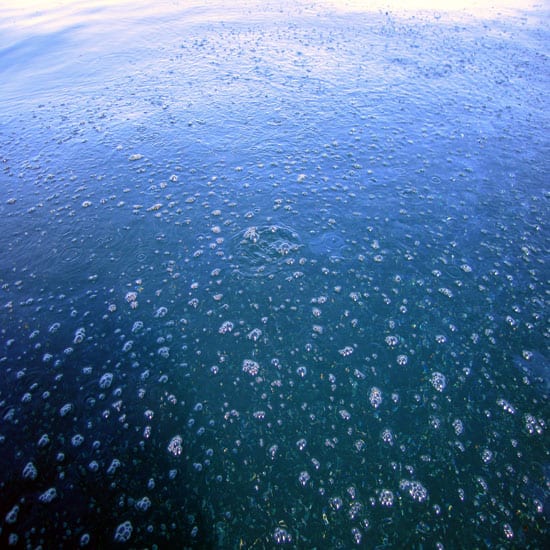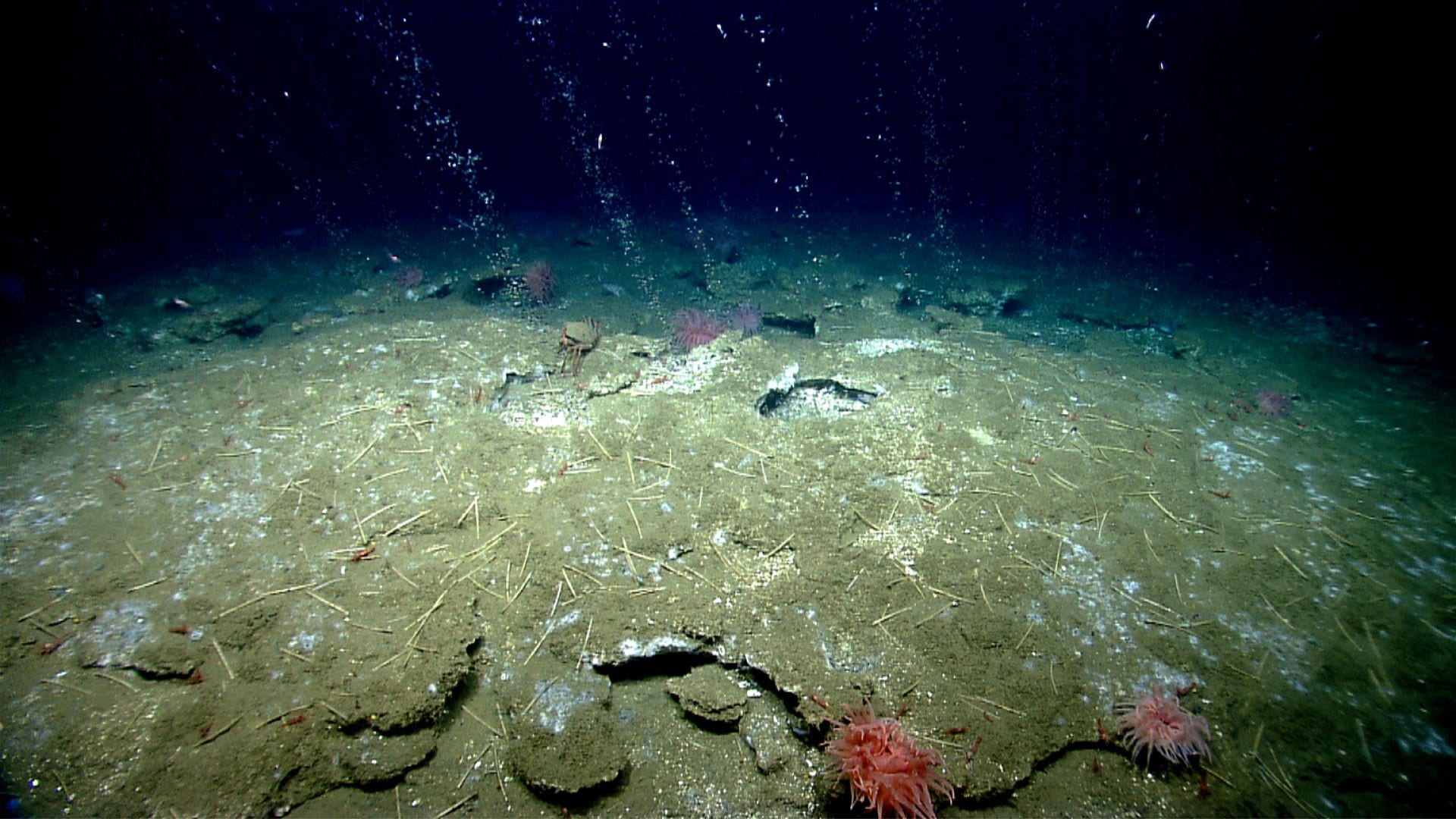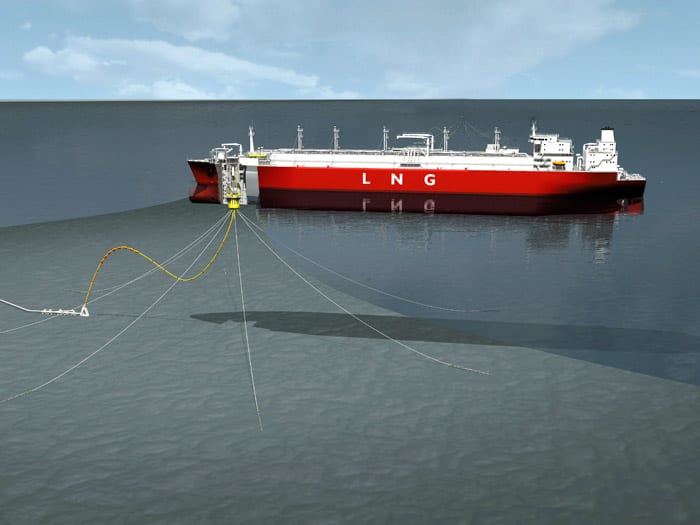What happens to natural gas in the ocean?
By Elise Hugus | October 4, 2022
Gas bubbles from the Nord Stream 2 leak on the surface of the Baltic Sea shows disturbance of well over one kilometer diameter near Bornholm, Denmark, September 27, 2022. (Photo courtesy of the Danish Defense Command)
When news broke on September 26 that natural gas pipelines had ruptured under the Baltic Sea, the immediate–and appropriate–concern was the impact on the climate. Methane, the most abundant hydrocarbon in natural gas, is a potent greenhouse gas. Though it persists in the atmosphere for far less time than carbon dioxide, during the first 20 years, methane is 80 times more effective at trapping heat. Authorities from the United Nations Environment Program have called the Nord Stream 1 and 2 leaks “likely the largest emission event ever detected,” expected to release 200,0000 tons of methane. As of October 3, 2022, pressure in the pipeline was reported to have stabilized, finally stemming the flow. Investigations are ongoing into the cause—and consequences—of the ruptures.
Though methane leaks of this size in the ocean are relatively uncommon compared to oil spills, the Nord Stream breach is an important opportunity to study the environmental impacts, says WHOI marine chemist Chris Reddy. Drawing on his experience studying oil spills around the world, Reddy weighs in on what might be happening in the Baltic Sea.
Catch us up—what is natural gas composed of?
Reddy: Natural gas is principally methane, which is a very simple organic molecule, one carbon bonded to four hydrogens. There are numerous ways that methane is produced on the Earth. In the case of the pipeline release, the methane was originally produced by reactions that occurred deep below ground in oil reservoirs. Due to some combination of increased time, temperature, and pressure, the larger hydrocarbons in the crude oil were converted to methane and lesser amounts of ethane, propane, butane, and several other compounds. This process is a called metagenesis.
What concerns do you have about a methane leak in the ocean?
Reddy: In the short term, you have a fast and massive release of methane in a very small area. So you have to start asking questions: How did it affect the local ecosystem? How does it affect humans standing by? If you were a fish or any little critter that was on the back side of those bubbles, I don't think you're doing well right now. So I’d want to know the extent of disturbance to marine life and if it leads to a noticeable shift in the local ecosystem.
On a global scale, adding any methane is not ideal because it’s a greenhouse gas. It has a capacity to capture heat and not let it go back out to the atmosphere.
What do you think happened to this methane as it leaked from the pipeline at depth into cold ocean water?
Reddy: Without knowing all of the details, there is no doubt that a significant amount of the methane released from the ruptured pipeline transferred into the atmosphere. We know this because atmospheric monitoring stations have recorded abrupt and anomalous spikes in the methane content. Some fraction likely remained in the water. A key point was the rapid release of gas under pressure that led to speedy surfacing from the bottom of the seafloor to the ocean surface.
If you were able to study it, what questions would you ask?
Reddy: I would be trying to figure out how much methane is still in the seawater. Purely from a scientific perspective, it’s an interesting opportunity to learn how methane behaves and its impacts and mechanisms when rapidly and massively released from the seafloor. In the Gulf of Mexico after Deepwater Horizon, there was a massive amount of methane that stayed in the subsurface, and communities of microbes did eventually “eat” it. In this case, one could ask, “Will the microbial community respond and respire the methane? Does the community structure change over time in areas where there is still detectable methane in the water?”
You could never get permission or funding to release this much methane from the seafloor. But, it’s a unique opportunity to see how nature responds to an uninvited guest. It's worth studying for decision-making and planning on the design, placement, and security of pipelines.
There are natural methane seeps in the ocean that microbes thrive on. Do you think this sudden release of methane could be an opportunity for them?
Reddy: There are critters out there that have figured out a way to use methane as a food source. But how many people can sit at a buffet and eat apples that are flying by at a zillion miles an hour? So, does nature have the capacity to eat and respire methane in the ocean? Yeah. And eventually the methane will break down, but when and how remains unknown. But it is safe to say that not much of the total methane released was eaten immediately. It wasn’t around for long enough.
How methane behaves in the environment depends on many other factors, like the temperature of the water, the microbial community, the weather nearby, and the extent of the leak. I mean, if you had a small leak at that same place over a long period of time, you would have a community that would figure out how to make a living off of it and it probably would not be a big deal. There would probably be a lot of happy little critters.
What does this leak tell us about putting pipelines under the ocean, sometimes in remote locations? What should we expect or be aware of?
Reddy: At the end of the day, a lot of how we respond to a leak or a spill is driven by the infrastructure and logistics. So the more extreme a place, the more difficult it is to get there, the more difficult it is to fight any problems. Our capacity to respond to crises, especially in the ocean, depends on whether or not we can bring the [metaphorical] fire department there in a fast, safe manner.
An unfortunate event like this demands swift, nimble action to gather evidence of impacts. Now, the upside is that methane is a gas and there are atmospheric monitoring stations. So the key point is whether or not there are any detectable impacts. And then the other thing–and this is always a big problem– is whether or not there was a baseline that exists to say, are things worse now than before? That's a great argument for basic science: To tell you how bad is it now, we need to know what it was like the day before. And of course, the baseline continues to change.

